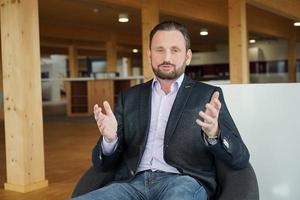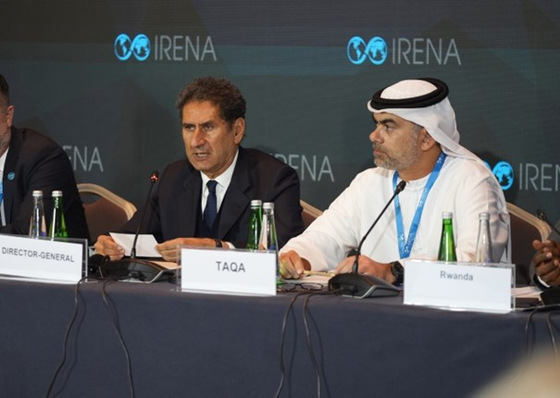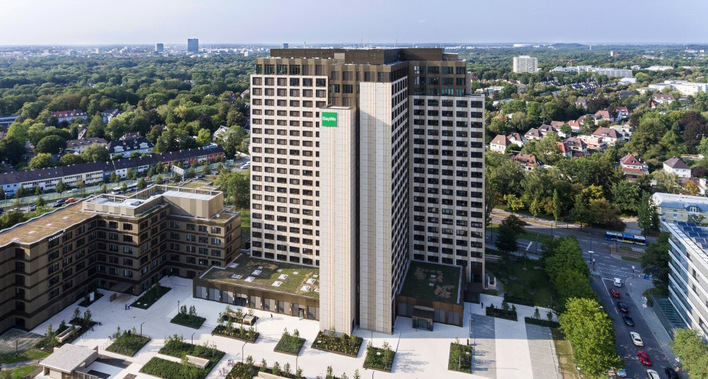As this week's topic is Power Purchasing Agreements, here is an interview that gives a good background on what they are and what implications they have:
Mr. Broda, what markets have preferred PPA systems to systems comparable with the German EEG?
The main PPA markets for renewable energies to date have been in the USA and Australia. However, markets in Europe are also becoming increasingly dynamic. As regards wind energy, this mainly applies so far to the Nordic markets, Great Britain, the Netherlands and Italy. In the photovoltaic field, Spain is currently making the headlines with mega solar farms with financing based on PPAs.
Are PPA systems better in terms of revenue?
It is not easy to say whether PPA systems are generally superior. However, wind and solar power generation is becoming increasingly competitive in Europe and therefore less dependent on subsidy mechanisms such as the EEG. On the other hand, PPA structures in other markets are also supported by tax or financing benefits or green quotas.
Why are PPAs nevertheless gaining ground in Europe?
There are various reasons. The most important reason is certainly the fact that the levelized costs of energy for wind and solar power have now fallen to the point where these technologies are competitive with power from conventional sources. This applies especially to markets with comparatively high power prices, as in Southern Europe. Particularly if there are no tendering mechanisms in these markets, project developers and investors have to rely on alternative marketing models for financing their projects. These requirements are met by banks prepared to provide financing and growing demand for clean power on the part of energy suppliers and traders as well as energy-intensive companies. These especially include companies from the IT sector and heavy industry.
Who is also opting for PPAs?
The CO2 footprint is also becoming an increasingly important issue for customer-oriented companies such as carmakers and consumer goods producers. Under PPAs, green power customers enter into medium-to long-term contracts and thereby protect themselves against rising power and CO2 prices. In Germany, the pilot projects for PPAs have not been new plants but old wind farms no longer covered by subsidies. As long as the facilities remain structurally stable, they can often be operated for a few years under a PPA until the cost of repair and maintenance rises above market revenues.

What is Juwi’s experience with PPAs as a globally active company?
Juwi has two trump cards. Firstly, we became active throughout the world at an early stage and can therefore benefit from the experience of colleagues in our offices in the USA, Australia or South Africa, for example. Secondly, our parent company, MVV Energie AG, has many years of experience in power trading. We therefore combine the strengths of a project developer and an energy supplier. PPAs bring developers and suppliers closer together.
What are the specific challenges when concluding a PPA for a new project?
The key paradigm shift faced by all participants in a PPA project is the fact that the opportunity/risk profile is changed at several points and needs to be covered by individual contractual agreements. On the sales side, it is at first necessary to find a long-term power customer and the creditworthiness of this customer must be taken into account in financing. Secondly, a long-term view on the power market is important. This extends beyond the period that can be covered by forward contracts. The respective shares of the resulting price risks to be borne by the power generator and the customer, in the form of indexing, caps or floors, depend on the individual contract.
Are there any other risks?
The question arises as to whether the customer purchases the power as it is generated in line with sunlight or wind conditions and possible curtailments or whether a fixed quantity is guaranteed. Volatility results in additional volume risks and the need to procure balancing energy or to opportunities in the event that excess power is generated. From the point of view of the financing bank, additional risks lead to interest surcharges or higher equity requirements. The same applies to the return required by investors if they have to bear additional risk compared with the EEG system. The risks must be reflected by the PPA and it must still be beneficial for the customer. This is by no means an easy task.
Do PPAs represent a future model for Germany, too?
As regards the financing of new facilities, the benefits of PPAs largely depend on the development of EEG tender volumes and prices as well as the general level of power prices. Currently, these factors are preventing the more widespread use of PPAs on the German market. However, price developments tend to favor PPAs more strongly in the solar field though the rules of the game could change very fast as a result of political interventions such as a consistent, rapid end to the use of coal. In Germany, there is a lack of adequate reference projects for PPA financing and the broad-based practical tests required for bank or project financing are still to be completed. As a result, standard contracts which could make financing easier have not yet been developed.

As regards financing, is it possible to finance projects with relatively short-term PPAs at all?
It is of course true that short-term PPAs make it more difficult to finance a project, which is why most of the PPAs in other countries have medium to long terms. The same applies to the question of what share in the power generated by a facility is marketed via PPAs. In this respect, there are also major differences in some cases between the appetite for risks shown by investors and banks.
What does that mean for the players involved?
For project developers like us, PPAs mainly mean another sales channel and will make market development less dependent on call for tenders and their conditions as regards approvals or land use. The risk of retroactive interventions in state subsidies faced by plant operators will also be reduced. On the demand side, the creditworthiness requirements mean that it will be mainly large companies and energy suppliers that are able to bear the risks associated with long-term contracts. In the future, all the companies concerned, banks and investors will need to understand PPAs and to be able to negotiate them and analyze them in detail. Individual preferences concerning certain contract elements make it difficult to compare different projects.
In many European countries, fixed feed-in tariffs such as those provided for in the German Renewable Energies Act (EEG) have helped wind, solar and other renewables make a breakthrough in the relevant energy markets. Will these statutory provisions soon come to an end?
Everyone is talking about the end of the EEG but what they really mean is the end of financial support. Many examples of projects with PPAs in Europe show how competitive renewable energies have become and how they can be financed in the marketplace. When considering power generation costs, the long-term effects of the expansion of wind and photovoltaic power on the power price are often neglected. In addition to increasing volatility, there may be cannibalization effects which can significantly depress the market value of electric power on a temporary basis. In my opinion, the question of whether these price risks can be borne for all the new projects required with a purely market-based PPA system remains open.
I also do not believe that the network expansion required and the management of this expansion can be left solely to the market. There are many reasons why an evolutionary type of development with coexisting market and statutory elements could be the best approach. Despite the growing significance of PPAs, some elements of the EEG will remain important, at least for the time being. (HCN, Juwi)
What is a PPA?
A power purchase agreement (PPA) is an individually negotiated power supply contract between a (renewable) power generator and a customer. A PPA mainly includes provisions on the contract parties, pricing, quantities, duration, securities, contract adjustments and evidence of origin. Where a fixed feed-in price is not available, a PPA lays the foundations for financing and operating a renewable energy project. Depending on whether the power is actually physically delivered or the contract is only intended for financial hedging on the power exchange, a distinction is made between financial and physical PPAs. The customer may be a commercial user (“corporate PPA”) or an energy supplier or trading company (“utility PPA”). The power may be supplied either via a direct line (direct-wire PPA) or via the public grid (sleeved PPA). (HCN/Juwi)
And here, in case you missed it, is Part 1 of this week's series.







